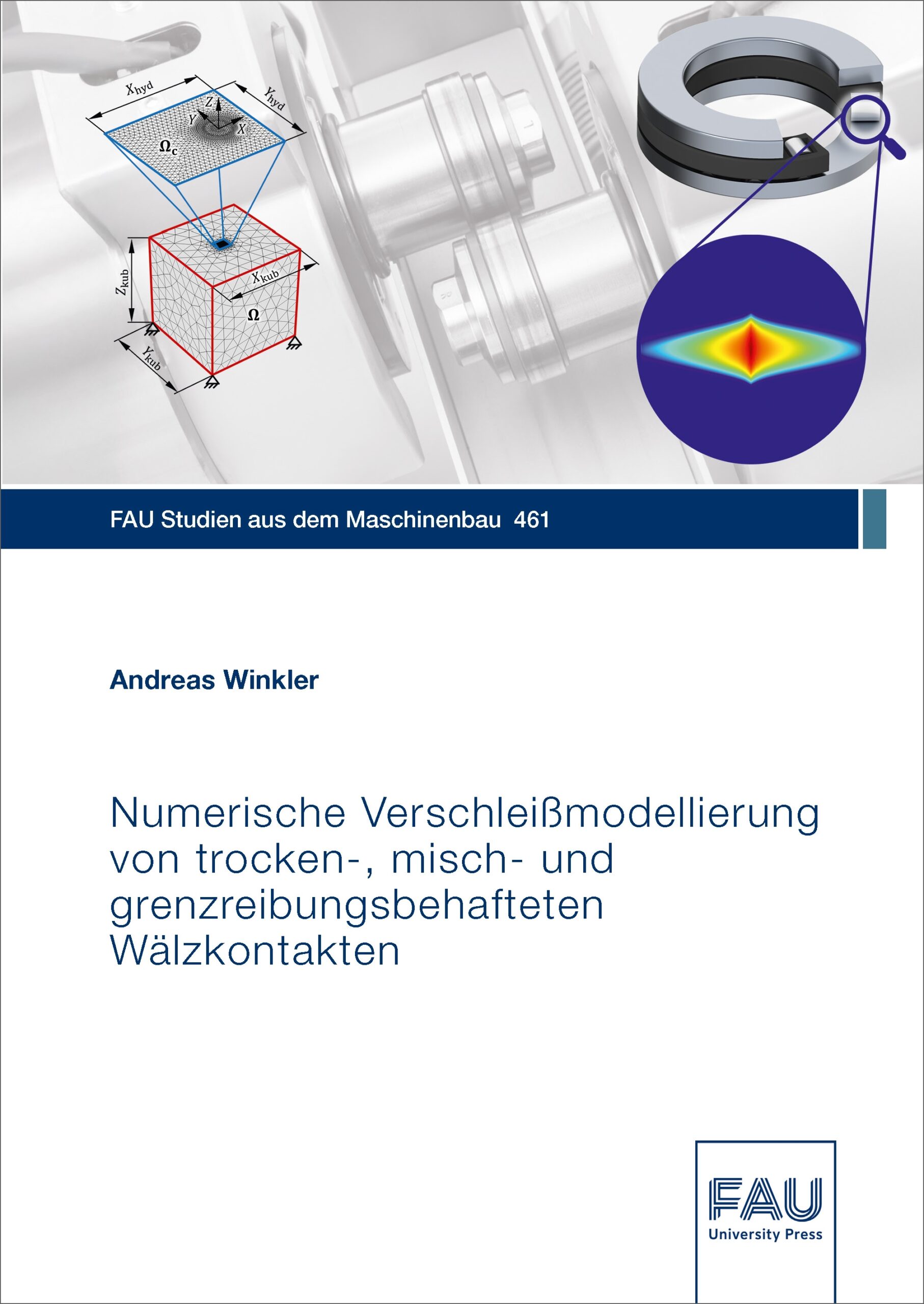Description
Etwa 20 % des weltweiten Energieverbrauchs lassen sich auf die Überwindung von Reibung zurückführen. Zur Reduzierung von Reibungsverlusten werden im Maschinenbau daher verstärkt niedrigviskose Schmierstoffe eingesetzt, welche jedoch zu geringeren Schmierfilmdicken und damit zu einem vermehrten Betrieb von hochbelasteten Maschinenelementen im Misch- oder Grenzreibungsgebiet führen. Daraus resultiert wiederum eine mögliche Zunahme des Verschleißes. Da Verschleiß zu katastrophalen Ausfällen und Betriebsstörungen führen kann, bietet die zuverlässige Vorhersage und Berechnung von Verschleiß Vorteile hinsichtlich der ressourcenschonenden Auslegung von Maschinenelementen und der Berechnung von Lebensdauern.
About 20 % of the global energy consumption can be attributed to overcoming friction. In order to reduce friction losses, low-viscosity lubricants are therefore increasingly used in mechanical engineering, which, however, lead to lower lubricant film thicknesses and thus to increased operation of highly loaded machine elements in the mixed or boundary lubrication regime. This in turn results in a possible increase in wear. Since wear can lead to catastrophic failures and malfunctions, the reliable prediction and calculation of wear offers advantages in terms of the resource-friendly design of machine elements and the calculation of service lives. As part of this work, a comprehensive numerical wear simulation based on the finite element method was developed for lubricated, dry-running and coated rolling/sliding-contacts. Furthermore, a procedure model for the experimental determination of a wear coefficient at model level for the application of a wear model using a 2-disc tribometer was established. Finally, a comparison was made between the results of the numerical wear simulation and experimental tests in order to derive future research potentials. The implementation of the wear simulation in commercially available software and the derivation of a procedure model for the experimental determination of wear coefficients at model level as an input variable for the wear simulation will enable a broad usability by researchers and engineers for a wide range of technical applications in the future.


Reviews
There are no reviews yet.